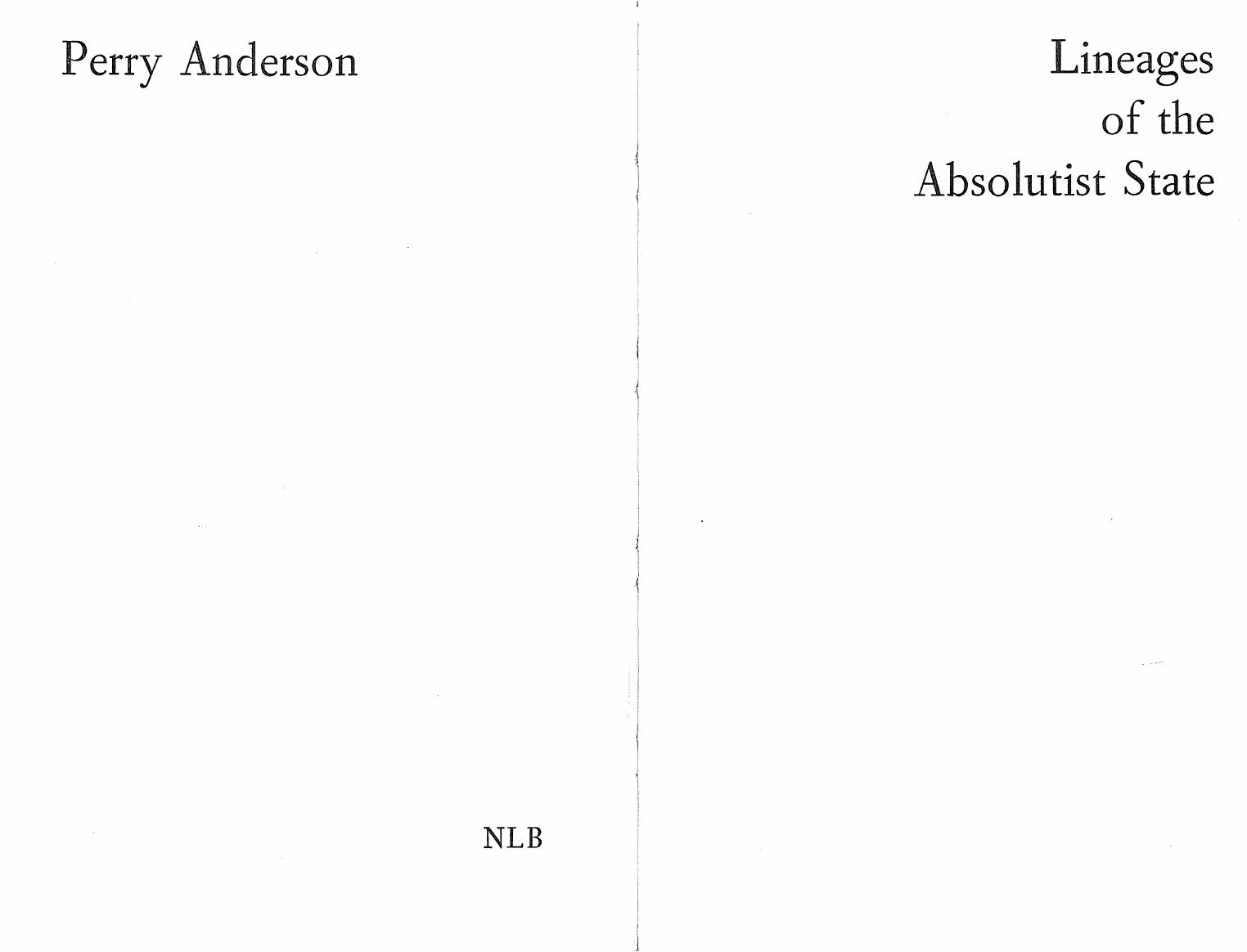Lineages of the Absolutist State by Perry Anderson

Author:Perry Anderson
Language: eng
Format: epub, pdf
Publisher: Verso Books
* * *
1. This emerges unmistakably from a representative recent survey of the causes adduced for the Partitions by Polish historians, many of which do little more than restate the problem: BoguslawLesnodarski, ‘Les Partages de la Pologne. Analyse des Causes et Essai d’une Théorie’, Acta Poloniae Historica, VII, 1963, pp. 7–30.
2. For this episode, see O. Halecki, ‘From the Union with Hungary to the Union with Lithuania’, W. F. Reddaway et al. (ed.), The Cambridge History of Poland, I, Cambridge 1950, pp. 19–193.
3. See A. Gieysztor, in S. Kieniewicz (ed.), History of Poland, Warsaw 1968, pp. 145–6.
4. Burghers from Cracow and (later) Wilno were admitted to the proceedings of the Sejm but had no vote.
5. J. Tazbir, in Kieniewicz (ed.), History of Poland, p. 176.
6. R. F. Leslie, The Polish Question, London 1964, p. 4.
7. Witold Kula, ‘Un’ Economia Agraria senza Accumulazione: La Polonia dei Seicoli XVI-XVIII, Studi Storici, No. 3–4, 1968, pp. 615–16. Income variations were much less, of course, because of the subsistence character of most peasant production (reckoned by Kula at some 90 per cent).
8. Tazbir minimizes the immediate practical results of this measure, but its intention is clear enough: Tazbir, History of Poland, p. 178.
9. Leslie, The Polish Question, pp. 4–5.
10. These clans were not direct descendants of tribal units of organization, but more recent formations modelled on them. For the whole problem of clan heraldry in Poland, see K. Gorski, ‘Les Structures Sociales de la Noblesse Polonaise au Moyen Age’, Le Moyen Age, 1967, pp. 73–85. Etymologically, the world szlachta probably derives from the Old High German slahta (Modern German Geschlecht), meaning family or race, although its origin is not absolutely certain. It may be noted that the Hungarian nobility was not dissimilar to the Polish in size and character, again because of the presence of pre-feudal clan principles in its initial formation: but the two cases should not be confused, since the Magyars were, of course, a nomadic people until the late 10th century, and hence had a very different anterior history and social structure from the Western Slavs.
11. For a sociological sketch, see Andrzej Zajaczkowski, ‘Cadres Structurels de la Noblesse’, Annates ESC, January-February 1968, pp. 88–102. Lithuanian magnates claiming descent from Gedymin or Rurik used the honorific title ‘Prince’, but this pretension had no legal force.
12. P. Skwarczyński, ‘Poland and Lithuania’, The New Cambridge Modern History of Europe, III, p. 400.
13. For this process, see Vernadsky, Russia at the Dawn of the Modern Age, pp. 196–200. Vernadsky’s book includes one of the fullest accounts of the Lithuanian State available, under the rubric of ‘West Russia’. For the background and provisions of the Union of Lublin, partly determined by military pressure on Lithuania by Muscovy, see pp. 241–8.
14. Tazbir, History of Poland, p. 196: in addition to his own domains, Zamoyski controlled vast tracts of the royal demesne. The lands belonging to the monarchy in Poland were widely alienated as security on loans to magnate creditors.
15. A. Maczak, ‘The Social Distribution of Landed Property
Download
Lineages of the Absolutist State by Perry Anderson.pdf
This site does not store any files on its server. We only index and link to content provided by other sites. Please contact the content providers to delete copyright contents if any and email us, we'll remove relevant links or contents immediately.
| Anthropology | Archaeology |
| Philosophy | Politics & Government |
| Social Sciences | Sociology |
| Women's Studies |
The Secret History by Donna Tartt(16653)
The Social Justice Warrior Handbook by Lisa De Pasquale(11492)
Thirteen Reasons Why by Jay Asher(7797)
This Is How You Lose Her by Junot Diaz(5791)
Weapons of Math Destruction by Cathy O'Neil(5045)
Zero to One by Peter Thiel(4833)
The Myth of the Strong Leader by Archie Brown(4795)
Promise Me, Dad by Joe Biden(4453)
Beartown by Fredrik Backman(4429)
Stone's Rules by Roger Stone(4422)
How Democracies Die by Steven Levitsky & Daniel Ziblatt(4408)
The Fire Next Time by James Baldwin(4349)
100 Deadly Skills by Clint Emerson(4084)
A Higher Loyalty: Truth, Lies, and Leadership by James Comey(4038)
Rise and Kill First by Ronen Bergman(4017)
The David Icke Guide to the Global Conspiracy (and how to end it) by David Icke(3890)
The Farm by Tom Rob Smith(3878)
Secrecy World by Jake Bernstein(3787)
The Doomsday Machine by Daniel Ellsberg(3736)
